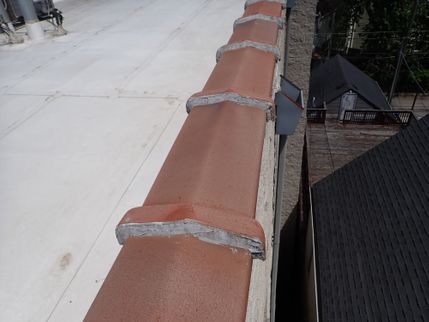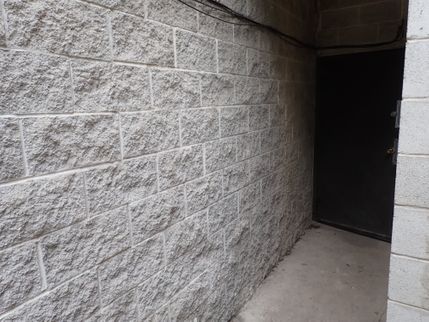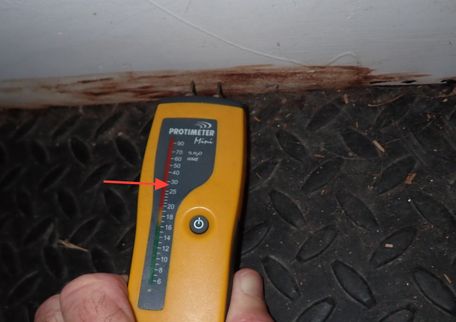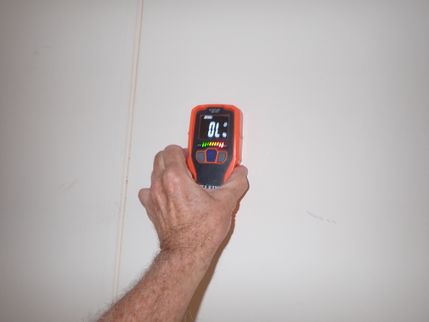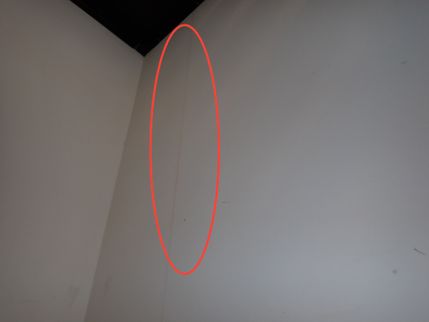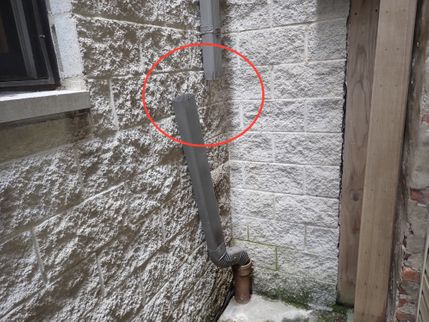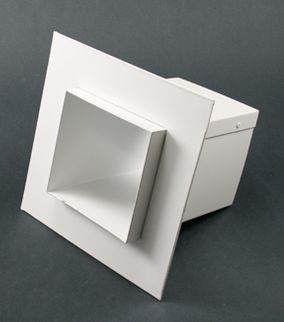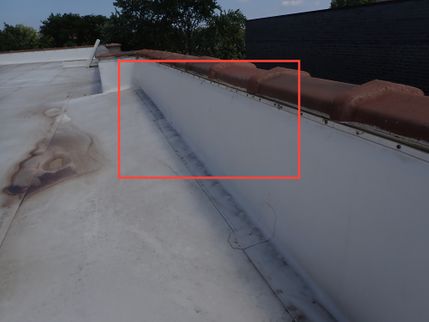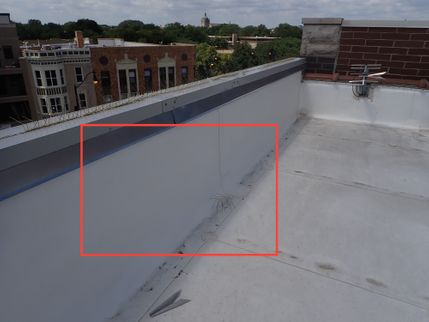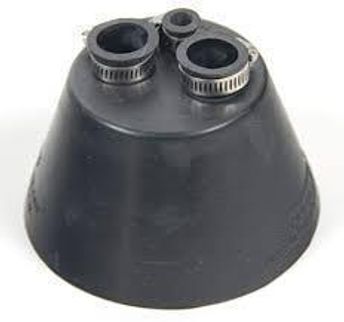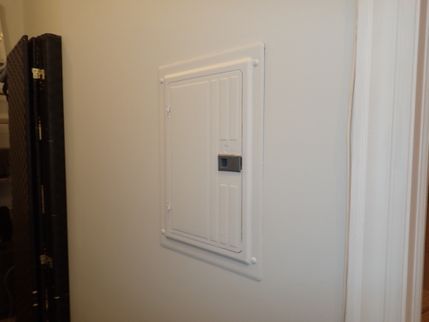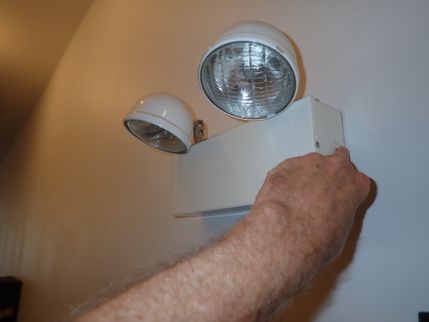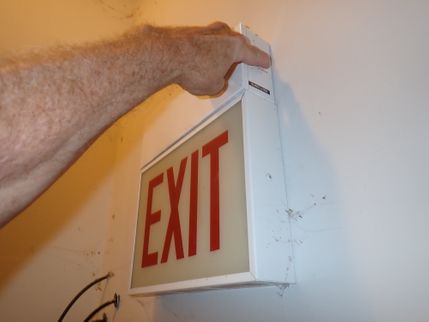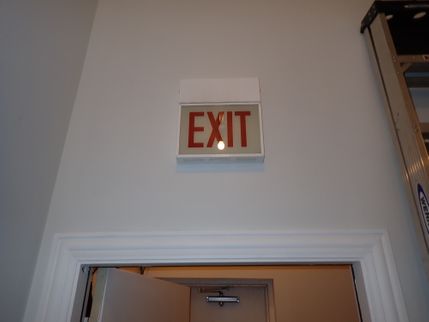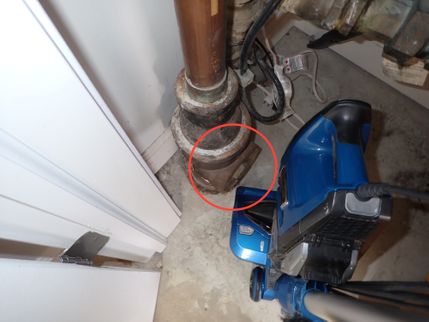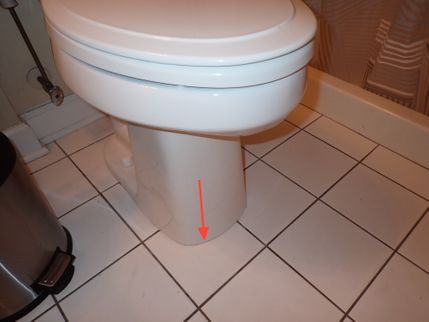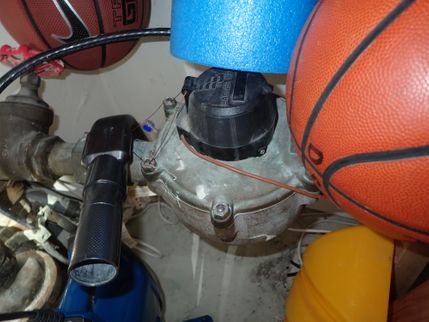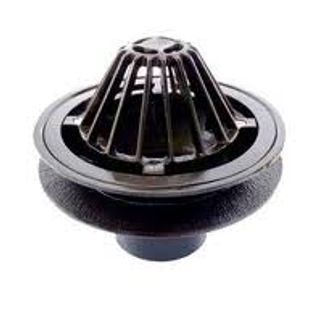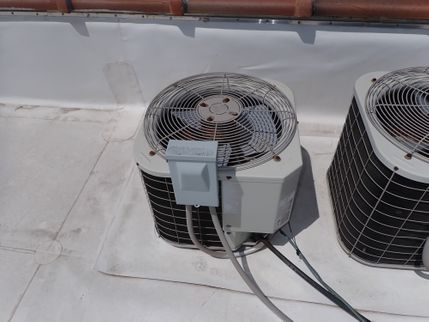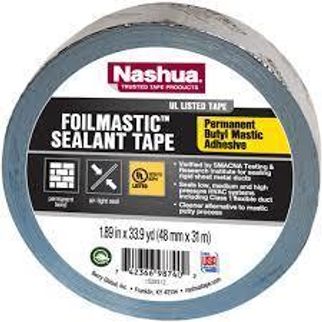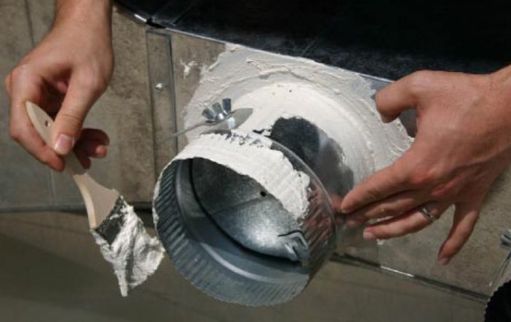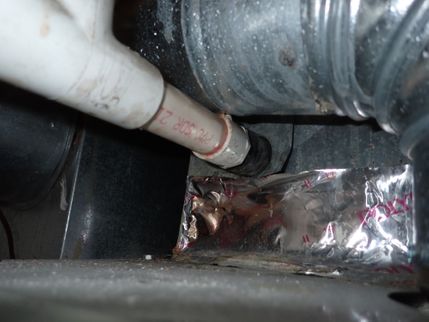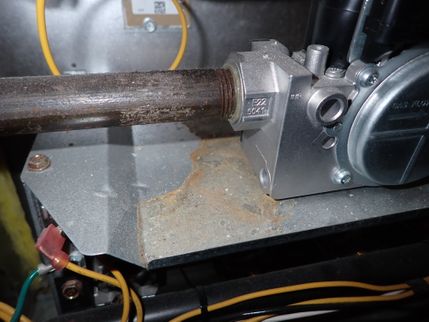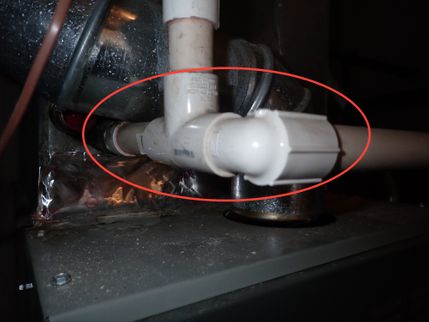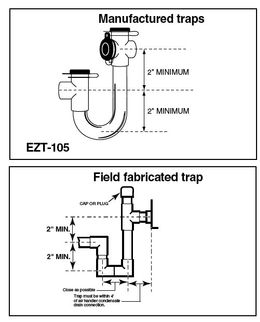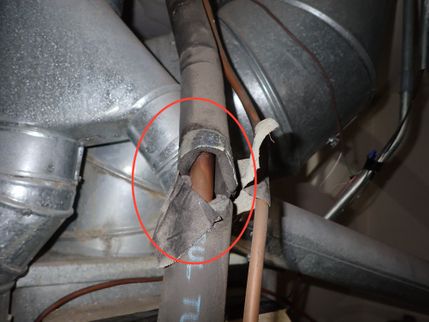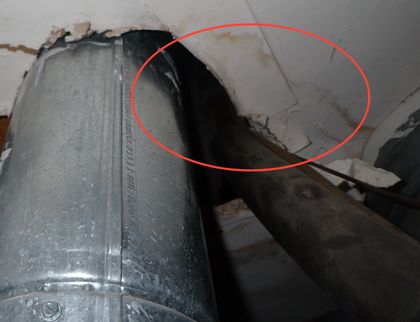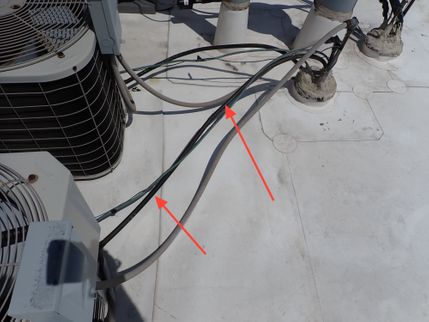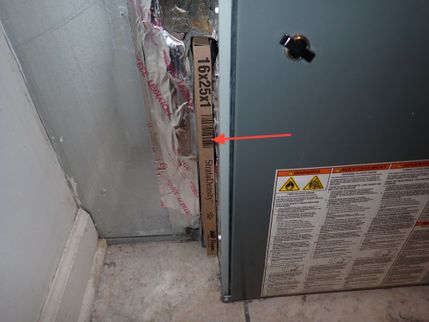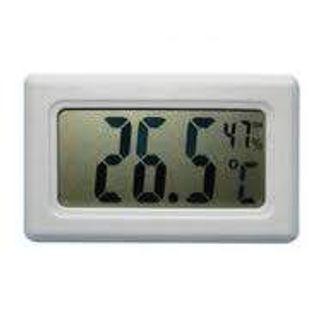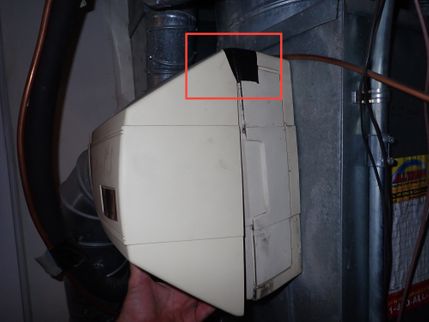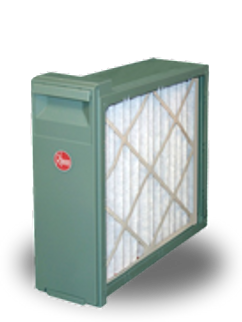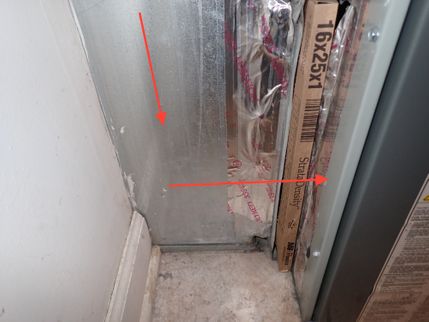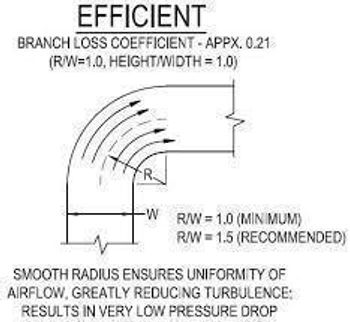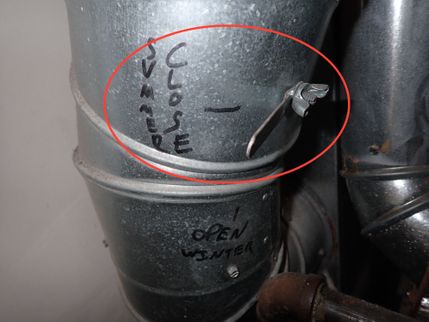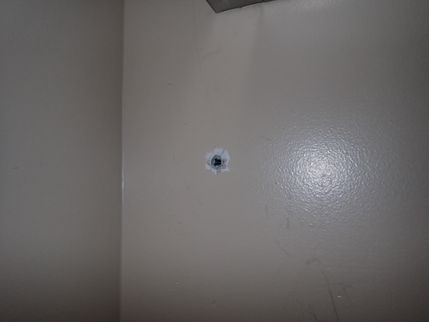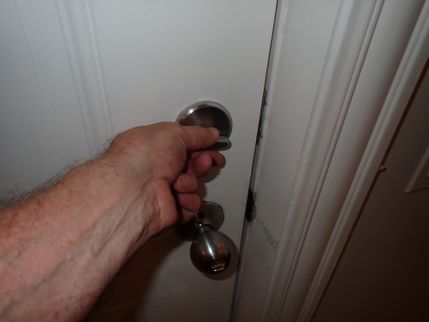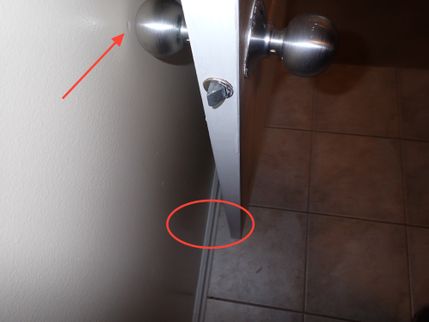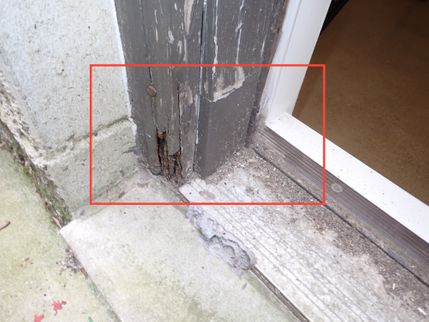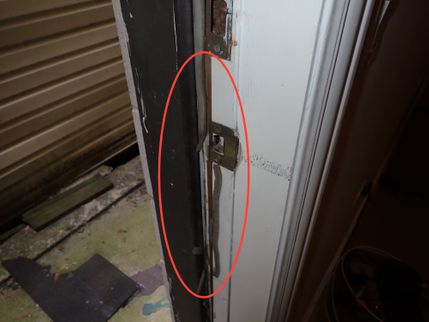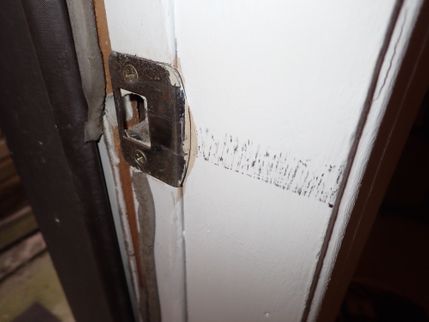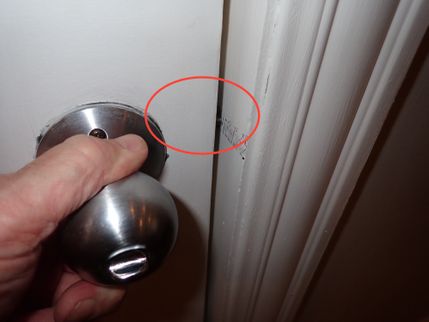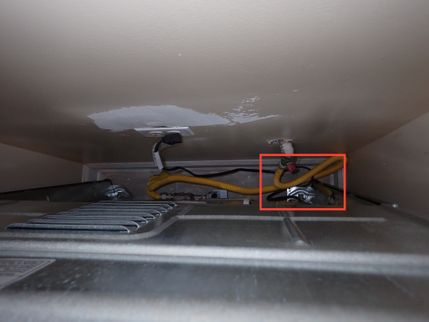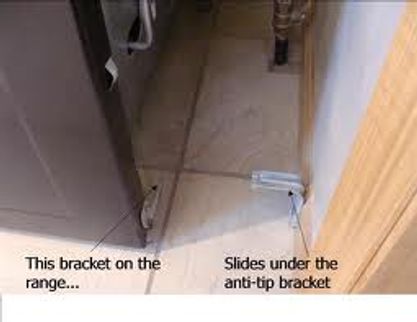The Scope and Purpose of a Property Inspection
Purchasing property involves risk
The purpose of a property inspection is to help reduce the risk associated with the purchase of a structure by providing a professional opinion about the overall condition of the structure. A property inspection is a limited visual inspection and it cannot eliminate this risk. Some structures present more risks than others. We cannot control this, but we try to help educate you about what we don’t know during the inspection process. This is more difficult to convey in a report and one of many reasons why we recommend that you attend the inspection.
A property inspection is not an insurance policy
This report does not substitute for or serve as a warranty or guarantee of any kind. Home warranties can be purchased separately from insuring firms that provide this service.
A property inspection is visual and not destructive
The descriptions and observations in this report are based on a visual inspection of the structure. We inspect the aspects of the structure that can be viewed without dismantling, damaging or disfiguring the structure and without moving interior objects. Areas that are concealed, hidden or inaccessible to view are not covered by this inspection. Some systems cannot be tested during this inspection as testing risks damaging the building or those systems if they have been temporarily de-commissioned. Our procedures involve non-invasive investigation and non-destructive testing which will limit the scope of the inspection.
This is not an inspection for code compliance
This inspection and report are not intended for city / local code compliance. During the construction process structures are inspected for code compliance by municipal inspectors. Framing is open at this time and conditions can be fully viewed. Framing is typically not open during inspections of finished structures, and this limits the inspection. All structures fall out of code compliance shortly after they are built, as the codes continually change. National codes are augmented at least every three years for all of the varying disciplines. Municipalities can choose to adopt and phase in sections of the codes on their own timetables. There are generally no requirements to bring older structures into compliance unless substantial renovation is being done.
This is just our opinion
Construction techniques and standards vary. There is no one way to build a structure or install systems in a structure. The observations in this report are the opinions of the inspector. Other inspectors and contractors are likely to have some differing opinions. You are welcome to seek opinions from other professionals.
The scope of this inspection
This inspection will include the following systems: exterior, roof, structure, drainage, foundation, attic, interior, plumbing, electrical and heating. The evaluation will be based on limited observations that are primarily visual and non-invasive. This inspection and report are not intended to be technically exhaustive.
Your expectations
The overall goal of a property inspection is to help ensure that your expectations are appropriate with the structure you are proposing to buy. To this end we assist with discovery by showing and documenting observations during the structure inspection. This should not be mistaken for a technically exhaustive inspection designed to uncover every defect with a building. Such inspections are available but they are generally cost-prohibitive to most homebuyers.
Your participation is optional
Your presence is optional during this inspection. This written report will discuss concerns and potentially needed repairs on the property and the inspector is always available for in-depth discussions regarding the property once you have had time to read through and examine the report in detail.
How to Read This Report
Getting the Information to You
This report is designed to deliver important and technical information in a way that is easy for anyone to access and understand. If you are in a hurry, you can take a quick look at our "Summary Page” and quickly get critical information for important decision making. However, we strongly recommend that you take the time to read the full Report, which includes digital photographs, captions, diagrams, descriptions, videos and hot links to additional information.
The best way to get the layers of information that are presented in this report is to read your report online (the HTML version), which will allow you to expand your learning about your property. You will notice some words or series of words highlighted in blue and underlined – clicking on these will provide you with a link to additional information. The HTML version of this report also contains streaming videos. Short video clips often contain important information and critical context and sounds that can be difficult to capture in words and still pictures.
For the most reliable viewing experience, I recommend viewing the report on as large a screen as practical, as much detail can be lost on small devices like smart phones. For similar reasons, reports should only be printed in color to retain as much detail as possible and minimize misinterpretation of photographs.
This report can also be printed on paper or to a PDF document.
Chapters and Sections
This report is divided into chapters that parcel the structure into logical inspection components. Each chapter is broken into sections that relate to a specific system or component of the structure. You can navigate between chapters with the click of a button on the left side margin.
Most sections will contain some descriptive information done in black font. Observation narrative, done in colored boxes, will be included if a system or component is found to be significantly deficient in some way or if we wish to provide helpful additional information about the system or the scope of our inspection. If a system or component of the structure was deemed to be in satisfactory or serviceable condition, there may be no narrative observation comments in that section and it may simply say “tested,” or “inspected.”
Observation Labels
All narrative observations are colored, numbered and labeled to help you find, refer to, and understand the severity of the observation. Observation colors and labels used in this report are:
- Major Concern:Repair items that may cost significant money to correct now or in the near future, or items that require immediate attention to prevent additional damage or eliminate safety hazards.
- Repair:Repair and maintenance items noted during inspection. Please note that some repair items can be expensive to correct such as re-finishing hardwood floors, but are considered simply repair items due to their cosmetic nature.
- Recommended Maintenance:These are repair items that should be considered "routine home ownership items," such as servicing the furnace, cleaning the gutters or changing the air filters in the furnace.
- Due Diligence:Observation such as a buried oil tank that may require further investigation to determine the severity and / or urgency of repair.
- Future Project:A repair that may be deferred for some time but should be on the radar for repair or replacement in the near future.
- Potentially Homeowners Association (HOA) Related:
The work items noted in this section may be part of what is paid for by the Homeowners/Condominium Association (HOA) for the subject property. As part of due diligence, it is recommended that the buyer determine if any of the noted work is currently being planned by the association in any upcoming reserve study work. - Efficiency:Denotes observations that are needed to make the home more energy efficient as well as to bring the home up to modern insulation standards. This category typically includes windows and insulation. Other items, such as lighting and appliances, are not inspected for their energy status.
- Note:Refers to aside information and /or any comments elaborating on descriptions of systems in the home or limitations to the home inspection.
Pest Inspection
All items with the bug logo () are part of a structural pest inspection. If your inspector included a structural pest inspection as a part of the scope of your home inspection, you can distinguish pest inspection items by this logo. You can also go to the pest inspection summary page to see a summary of the items that are part of a pest inspection.
Summary Page
The Summary Page is designed as a bulleted overview of all the observations noted during inspection. This helpful overview is not a substitution for reading the entire inspection report. The entire report must be read to get a complete understanding of this inspection report as the Summary Page does not include photographs or photo captions.
Summary
Major Concerns
- O-1 OTHER:
The smoke detectors noted in the unit appeared to be at or beyond the end of their service lives, typically taken to be 10 years for smoke detectors and 5 years for carbon monoxide detectors. It is recommended that the smoke detector and carbon monoxide detector systems be upgraded to reflect current life safety codes which include; smoke detectors on each level of living space and in each sleeping room, hard-wired 120 V smoke detectors that are interconnected in order to alarm simultaneously when any individual smoke detector responds, and carbon monoxide detectors and every level of living space and within 15 feet of a sleeping room. The installation of these critical life safety devices by a licensed and competent electrician is recommended.
Repairs
- ESGCDAF-3 ELECTRICAL SYSTEM, GROUNDING, CONNECTED DEVICES AND FIXTURES:
The cover for the electric service panel has been painted. This makes the cover difficult to remove and although the inspector took measures like scoring the paint along the edges of the cover with a utility knife, the painted surfaces were damaged in the process of removing the cover. It is highly recommended that the panel cover not be re-painted and that an appropriate piece of art or other wall covering be used to cover the panel.
- ESGCDAF-6 ELECTRICAL SYSTEM, GROUNDING, CONNECTED DEVICES AND FIXTURES:
The emergency exit light in the rear of the unit was not lit at the time of the inspection and for proper safety in the unit the bulb should be replaced or the unit made functional by a qualified electrician or handyman.
- PSDFAV-3 PLUMBING SUPPLY, DRAINS, FIXTURES AND VENTS:
The gap between the toilet base and tile floors should be sealed using the appropriate materials and methods in order to reduce a "fouling area". If mop water, bathtub water or a less pleasant "bathroom liquid" gets underneath the toilet, there is no way to clean it up. In order to reduce this risk and promote proper sanitation in the bathroom, caulking around the base of the toilet is recommended.
- PSDFAV-4 PLUMBING SUPPLY, DRAINS, FIXTURES AND VENTS:
Older style gate valve shut-offs were noted on supplies to many of the plumbing fixtures in the residence. These supplies can be prone to leakage when operated and they were not opened or closed at the time of the inspection. In order to be able to shut off water to service plumbing fixtures in the future, the valves should be replaced with 1/4 turn ball valves by a qualified plumber.
Also, the toilet in the unit is connected by a solid supply line that is prone to leakage from movement. In order to reduce the potential for moisture related damage, it is highly recommended that the supply line for the toilet be replaced with braided stainless toilet supply.
- PSDFAV-6 PLUMBING SUPPLY, DRAINS, FIXTURES AND VENTS:
In order to reduce the risk for clogging and flooding in the basement stairwell, the installation of a dome style cover on the exterior basement stairwell landing drain is recommended.
- HACVAGAS-3 HEATING, AIR CONDITIONING, VENTILATION, AND GAS APPLIANCE SYSTEMS:
Condensation staining and air gaps were noted on the air conditioning lines set and condensate drain entry points into the HVAC unit and leakage stains were observed in the combustion chamber of the furnace. In order to prevent further condensation and possible damage to the HVAC equipment, these entry points should be sealed a licensed and competent HVAC contractor.
- HACVAGAS-6 HEATING, AIR CONDITIONING, VENTILATION, AND GAS APPLIANCE SYSTEMS:
The deteriorated/missing insulation on the A/C refrigerant lines can result in energy losses that promote the formation of condensation. In order to reduce the potential for moisture related damage and to reduce energy losses and maximize efficiency, the insulation should be replaced by a qualified HVAC contractor.
- IVAE-1 INSULATION, VENTILATION, ATTICS, ETC.:
Open gaps were noted in the ceiling of the furnace closet that can allow smoke, carbon monoxide, and superheated gases to pass into other areas of the condominium in the event of a fire. In order to close off the gaps it is recommended that all opening be sealed with intumescent foam or other appropriate fireproofing materials.
- IAF-1 INTERIORS AND FINISHES:
Portions of the caulk between the bathtub and tub/shower wall tile appear to have a mold like substance in/on it. Once mold has penetrated into the body of the caulk it typically cannot be successfully eliminated and for proper appearance the caulk should be removed and replaced by a qualified contractor.
Note - If grout is found in any corner areas beneath the caulk, these areas are prone to cracking and the presence of the grout does not allow for the formation of a proper caulk joint. In order to prolong the life of the caulk joints and reduce the potential for moisture to enter the cracks and damage the underlying sub-base, it is recommended that the grout be raked out completely prior to re-caulking.
- IAF-2 INTERIORS AND FINISHES:
The interior finishes have some minor blemishes and in order for the interior to conform to accepted appearance standards, some repairs, re-finishing, drywall touch ups and repainting may be needed.
Persistent cracks in common areas for cracking like above doors and windows should be repaired with a flexible repair material. Here is a link to information regarding one such product: Applying Krack Kote
- WDS-1 WINDOWS, DOORS, SKYLIGHTS:
At least one of the doors in the residence failed to close or latch properly. For proper operation it is recommended that any non-functional doors be repaired or adjusted by a qualified carpenter or handyman.
- WDS-2 WINDOWS, DOORS, SKYLIGHTS:
Damaged finishes were noted on the walls adjacent to many of the doors. In order to protect the adjacent finishes and components from damage, door stops (hinge mounted, floor mounted, or wall mounted) should be installed by a qualified handyman.
- WDS-4 WINDOWS, DOORS, SKYLIGHTS:
The weatherstripping around the exterior entry door/s is deteriorated and/or missing. In order to conserve energy, reduce cold drafts and reduce noise levels inside the living space, the installation of high quality rubber bulb weatherstripping by a qualified handyman is recommended at the top and sides of the exterior entry door(s).
- WDS-5 WINDOWS, DOORS, SKYLIGHTS:
The door latch on the exterior entrance door is damaging the doorframe. In order to prevent recurring disfigurement and damage to the doorjamb(s), the installation of an extended strike plate by a qualified carpenter or handyman is recommended.
- IA-1 INSTALLED APPLIANCES:
The kitchen range is unsecured and has the ability to tip under the right circumstances. In order to reduce the potential for scald and burn injuries related to the instability of the kitchen range, an anti-tipping device (Federally mandated and shipped with all ranges) should be installed behind the kitchen range.
Recommended Maintenance Items
- PSDFAV-2 PLUMBING SUPPLY, DRAINS, FIXTURES AND VENTS:
FYI: Traps on floor drains without a continuous source of moisture can dry out and should be regularly monitored and re-filled with water as needed to prevent the migration of sewer gas into the home. The application of several drops of mineral oil can retard the evaporation of the water 'plug' in the floor drain trap.
Due Diligences
- GI-1 GENERAL INFORMATION:
Radon is a colorless odorless gas that results from the natural decay of underground uranium deposits. The US EPA estimates that radon is responsible for approximately 22,000 deaths throughout the United States annually. The presence or absence of radon cannot be accurately inferred by the presence or absence of radon gas in adjoining or nearby properties. The only way to know for certain if the home has excess levels of radon levels is to perform a test. Testing is recommended to be performed during a residential real estate transaction not only for health reasons but also due to the fact that sellers will typically take responsibility for the cost of radon mitigation if excessive levels are found during the buyer's due diligence. It is strongly recommended that a radon test be performed at this property.
Here is a link to information from the EPA regarding Radon: Radon is a health hazard with a simple solution
- ESGCDAF-1 ELECTRICAL SYSTEM, GROUNDING, CONNECTED DEVICES AND FIXTURES:
The evaluation of the low-voltage equipment in the home: alarm, communication, audiovisual, etc., is beyond the scope of the home inspection and should be performed by a qualified low-voltage electrical contractor. In order to reduce the potential for confusion and to reduce clutter around the home, any wiring, panels, cabinets, etc. for any equipment that is no longer in use should be removed.
- PSDFAV-1 PLUMBING SUPPLY, DRAINS, FIXTURES AND VENTS:
A video camera sewer scope is recommended. An evaluation of the sewer line below the ground is beyond the scope of this inspection. Due to the age and location of the building, a sewer scope is recommended to further evaluate the sewer line and the below ground connections between the building and the municipal sewer line. Sewer scopes are done using video cameras and can reveal the materials, condition and reliability of the sewer line. If the association hasn't had one done recently or since the buildings construction, I recommend having a sewer scope performed.
- O-2 OTHER:
It is strongly recommended that the buyer request a copy of all pertinent documentation regarding the financial condition of the HOA. This documentation should include a copy of the declarations and bylaws, a copy of the HOA meeting minutes going back at least one year and a copy of the latest reserve study (if one exists). Failure to maintain a current (updated within the last five years) reserve study could suggest a lack of diligence on the part of the condominium board.
Future Projects
- HACVAGAS-1 HEATING, AIR CONDITIONING, VENTILATION, AND GAS APPLIANCE SYSTEMS:
The air-conditioning condenser is close to the end of the expected service life and although the system was operational at the time of the inspection, cooling levels may be inadequate in the near future. The R-22 refrigerant that is used in the unit is being phased out and no new or imported R-22 is allowed in the U.S. and technicians will only be able to use recycled, reclaimed or previously produced R-22 to service equipment. Therefore, it will become more expensive to service the unit in the future. The cost to retrofit the HVAC system to use the new R-410 A replacement refrigerant is expensive and involves replacing the evaporator coils in the furnace.
Potentially Homeowners Association Hoa Relateds
- EWGCE-1 EXTERIOR WALLS< GROUNDS, CHIMNEYS. ETC:
Cracking was noted in the masonry joints between dissimilar materials, stone features, stone coping and corner joints on the structure. All dissimilar elements on the exterior walls of the structure such as: brick-to-stone; brick-to-concrete block; concrete block-to-glass block, all interior corners and all construction joints should be joined one to the other and sealed against moisture through the use of backer rod and urethane caulk or its equivalent. These elements have either differing coefficients of expansion and contraction in relation to temperature and moisture and/or are subject to movement which can lead to cracking of the cladding material and/or of the mortar joints. In order to reduce the potential for moisture related damage, the existing cement mortar joints should be ground out and replaced with the appropriate backer rod and ASTM approved caulking by a qualified masonry repair contractor.
This procedure is in keeping with the standards set forth by the Brick Industry Association. Further information is available at the following link: Accommodating Expansion of Brickwork
- EWGCE-2 EXTERIOR WALLS< GROUNDS, CHIMNEYS. ETC:
The mortar joints at the corners of the stone window sills and between all limestone copings/sills is cracked and deteriorated. In order to reduce the risk of moisture saturation, moisture intrusion to the interior and damage to the brick masonry below the sills, the mortar in the joints should be raked out and sealed instead with a high-quality masonry caulking compound by a qualified masonry restoration contractor or handyman.
- EWGCE-3 EXTERIOR WALLS< GROUNDS, CHIMNEYS. ETC:
The butt joints between the individual sections of clay tile coping have been sealed with cement mortar. The mortar is cracking and the joints are open which creates a risk for moisture saturation/damage to the masonry walls below. The coping tiles serve to protect the underlying brick masonry walls from wetting/drying and freezing/thawing damage and should be neatly joined and properly sealed in order to perform this function. The coping tiles should be repaired or replaced as needed by a qualified masonry or roofing contractor. It is recommended that the individual clay tiles be removed and reinstalled using backer rod and polyurethane caulk to seal the joints.
- EWGCE-4 EXTERIOR WALLS< GROUNDS, CHIMNEYS. ETC:
The masonry garbage container structure in the rear has deteriorated joints and damaged and deteriorated wood features that appear to prevent the use of the structure. If use of garbage can storage is desired the structure should be repaired by a qualified masonry contractor and carpenter or should be removed.
- EWGCE-5 EXTERIOR WALLS< GROUNDS, CHIMNEYS. ETC:
There was a musty smell in the rear stairwell and moisture stains were observed and active moisture was measured in the stairwell. Concrete/split faced block are highly porous building materials. The failure to maintain the exterior concrete block walls can lead to moisture intrusion, wood rot, mold growth, structural damage and (if severely neglected for a prolonged period) structural floor collapse. The building codes call for these materials to be pre-treated with water repellent at the factory and for the mortar used in their installation to also be water repellent. Even so, regular evaluation for moisture absorption and regular applications of surface-applied water repellent treatments are required every several years in order to protect against moisture intrusion into the living spaces. The penetrating masonry sealants in common use appear to be providing five years or less of moisture resistance under field conditions in our area. High build coatings will typically provide longer lasting protection against moisture absorption when applied to concrete masonry units a.k.a. concrete block or split faced block.
The condominium association should, in consultation with a qualified masonry restoration or painting contractor, assess the suitability of high build coatings on the exterior concrete block walls of this building. Any cracks in the mortar should be assessed and re-pointed if needed by a qualified masonry restoration contractor prior to applying any waterproofing coating.
Further information regarding high build coatings can be found in the article found at this link: High Build Coatings
- EWGCE-6 EXTERIOR WALLS< GROUNDS, CHIMNEYS. ETC:
One of the downspouts on the south side is disconnected and is saturating the side of the building. In order to reduce the risk of soil saturation around the foundation, the downspouts around the structure should extend approximately 6 feet away from the foundation walls to well-drained areas.
- EWGCE-7 EXTERIOR WALLS< GROUNDS, CHIMNEYS. ETC:
The through-wall scupper openings are not properly configured and present a significant risk for moisture penetration and damage. The multiple applications of contrasting caulk suggests a history of such leaking. It is recommended that plans be made to have a qualified sheet metal or gutter installation contractor reconfigure the scupper openings using heavy gauge Kynar coated aluminum or equivalent sleeved sheet-metal assemblies properly integrated into the modified bitumen roof coverings.
- RCRFRD-1 ROOF COVERINGS, ROOF FLASHING, ROOF DRAINAGE:
Best roofing practices call for the roof covering to be held back and terminated along the parapet wall typically between 12" and 36" depending on the height of the parapet wall itself. When the membrane is wrapped up and over the parapet top it prevents moisture from draining/evaporating at that side and will reduce mortar and brick life on the opposite side as moisture seeks pathways to drain or evaporate. It is recommended that the membrane be removed and terminated at an appropriate height on the parapet wall with appropriate base and counterflashing. Once the roofing has been removed the masonry parapet walls should be evaluated by a qualified masonry restoration contractor and mortar repairs should be expected where the roof concealed masonry details.
- RCRFRD-2 ROOF COVERINGS, ROOF FLASHING, ROOF DRAINAGE:
The A/C refrigerant line roof penetrations are sealed with caulk and/or tar which is a high maintenance, low performance solution that creates the potential for damaging and mold causing moisture to enter the structure. It is recommended that the roof penetrations be repaired by a qualified roofing and/or HVAC contractor and the solutions should include pitch pocket flashing or rubber boot flashing specifically designed for the various diameter tubing sizes in order to separate the lines and create the potential for more effective sealing of the A/C refrigerant lines.
- ESGCDAF-2 ELECTRICAL SYSTEM, GROUNDING, CONNECTED DEVICES AND FIXTURES:
The clamp securing the grounding wire to the driven ground rod is intended for a pipe connection and does not provide adequate connectivity to the ground rod. In order to ensure proper grounding of the electrical system, it is recommended that a qualified electrician evaluate and repair the grounding system by installing an acorn style grounding clamp or by other approved means.
- ESGCDAF-4 ELECTRICAL SYSTEM, GROUNDING, CONNECTED DEVICES AND FIXTURES:
There were numerous burned out bulbs in the rear stairwell leaving it extremely dark which creates potential fall hazards that may present a liability concern for the condominium association and the bulbs should be replaced as soon as practical
- ESGCDAF-5 ELECTRICAL SYSTEM, GROUNDING, CONNECTED DEVICES AND FIXTURES:
A spot check of the battery operated emergency lighting system/s revealed one or more non-functioning units. It is strongly recommended that these critical life safety devices be regularly evaluated and repaired as needed by a qualified electrician.
- ESGCDAF-7 ELECTRICAL SYSTEM, GROUNDING, CONNECTED DEVICES AND FIXTURES:
The exterior light fixture on the south side of the structure is loose and unsealed. Loose electrical fixtures can result in arcing/sparking during use and present an increased risk of fire and the unsealed condition can allow electricity to come into contact with energized equipment. Any loose electrical fixture in the structure should be evaluated and repaired as needed by a licensed electrician.
- PSDFAV-5 PLUMBING SUPPLY, DRAINS, FIXTURES AND VENTS:
Buildings constructed in the City of Chicago which are 40 feet or taller are typically required to have water pressure booster pumps installed at the time of construction. No such system was noted in the subject property and the upper level units in this structure may have reduced flow when multiple fixtures are running. In order to ensure there is adequate water pressure to the upper level units, a qualified plumbing contractor should evaluate the water supply system in the structure and install such a system if it is determined that one is needed.
- WDS-3 WINDOWS, DOORS, SKYLIGHTS:
The lower portion of the doorframe on the exterior side entry door are deteriorated and elevated moisture levels were measured. In order to reduce the potential for further moisture related damage, it is recommended that a qualified carpenter evaluate and replace the deteriorated portions of the doorframe, possibly with materials that are less affected by moisture like PVC lumber.
Efficiencies
- HACVAGAS-2 HEATING, AIR CONDITIONING, VENTILATION, AND GAS APPLIANCE SYSTEMS:
Gaps may be present in the supply and return air duct work and/or in the HVAC plenums. These gaps create air leaks which can reduce the efficiency of the HVAC unit, and which can negatively impact both indoor air comfort and indoor air quality. The supply and return air ducts should be sealed using approved materials and methods; duct mastic is the preferred material for accessible duct sealing, however, complete duct sealing may be needed in some areas and there are companies that perform this service.
Here is a link to questions and answers regarding this process from one such company: Top 10 Questions Still Asked About Aeroseal
- HACVAGAS-4 HEATING, AIR CONDITIONING, VENTILATION, AND GAS APPLIANCE SYSTEMS:
Splashing, leaking and energy losses can occur in the evaporator drain pan from air backflow through the drain pipe for the A/C condensation. The installation of a trap on the condensate drain by a qualified HVAC contractor is recommended downstream of it's penetration from the furnace casing and upstream of the humidifier drain (if one is installed).
NOTE: The trap should be able to be cleaned and in order to reduce the potential for biological growth it should be cleaned at least annually.
- HACVAGAS-7 HEATING, AIR CONDITIONING, VENTILATION, AND GAS APPLIANCE SYSTEMS:
The filter rack for the HVAC system is unsealed. In order to to prevent "air filter bypass" and the resulting dirt accumulation inside the operating components of the HVAC system, it is recommended that the large gaps around the HVAC air filter slot be sealed.
- HACVAGAS-9 HEATING, AIR CONDITIONING, VENTILATION, AND GAS APPLIANCE SYSTEMS:
The use of one inch thick HVAC air filters constitutes a low performance installation in what should be a high-performance home. Open weave filters (known in the vernacular as "rock catchers" due to the ability of particles to pass through the filter) will allow for proper flow of conditioned air and optimal energy transfer thereby allowing the heating and cooling equipment to operate as close as possible to its rated efficiency and capacity. However, these filters perform poorly at dust capture and in order to maintain even that low level of indoor air quality performance, they need to be changed frequently.
The use of thin pleated media filters can improve air quality for those with allergies, however, allergen filters will typically create a drastically reduced flow of air across the heating and cooling portions of the HVAC equipment, thereby significantly reducing the capacity and efficiency of the furnace and the air-conditioning system. Optimal air filtration is provided by 4 inch or 5 inch deep pleated filters since they allow for excellent dust capture and free conditioned air flow simultaneously. In order to determine the cost and feasibility for the installation of these high-performance HVAC air filters, it is recommended that the furnace/s in the home be further evaluated and potentially improved by a qualified HVAC contractor.
- HACVAGAS-10 HEATING, AIR CONDITIONING, VENTILATION, AND GAS APPLIANCE SYSTEMS:
The lack of a sweeping air return into the HVAC system reduces the efficiency of the airflow movement through the system thereby increasing heating and cooling costs. It is recommended that the return duct be evaluated by a qualified HVAC professional and that a cost be determined for reconfiguring the return ductwork for improved airflow capabilities.
The Full Report
GENERAL INFORMATION
TYPE OF STRUCTURE: Mixed Residential/Commercial
NUMBER OF BEDROOMS: One
APPROXIMATE AGE OF STRUCTURE: Under 25 Years, Online information suggests structure was built in 2001
STRUCTURE FACES: West
CLIENT PRESENT: Yes, No
RADON TEST: No, RADON TESTING STRONGLY RECOMMENDED
WATER QUALITY TEST: No
WEATHER CONDITIONS: Clear
AMBIENT TEMPERATURE: Over 60
NUMBER OF STORIES: Four Story
EXTERIOR WALL CONSTRUCTION: Masonry, Windows
PRIMARY EXTERIOR WALL CLADDING MATERIAL: Split Faced Block - Condominium
FOUNDATION: Foundation not Accessible
Radon is a colorless odorless gas that results from the natural decay of underground uranium deposits. The US EPA estimates that radon is responsible for approximately 22,000 deaths throughout the United States annually. The presence or absence of radon cannot be accurately inferred by the presence or absence of radon gas in adjoining or nearby properties. The only way to know for certain if the home has excess levels of radon levels is to perform a test. Testing is recommended to be performed during a residential real estate transaction not only for health reasons but also due to the fact that sellers will typically take responsibility for the cost of radon mitigation if excessive levels are found during the buyer's due diligence. It is strongly recommended that a radon test be performed at this property.
Here is a link to information from the EPA regarding Radon: Radon is a health hazard with a simple solution
EXTERIOR WALLS< GROUNDS, CHIMNEYS. ETC
GAS SHUT-OFF LOCATION: Exterior Wall - South
WALKWAYS PATIOS DRIVEWAYS: Asphalt Driveway
VEGETATION/GRADING/DRAINAGE: Improper Downspout Terminations
EXTERIOR STEPS/STAIRWAYS/RAILINGS: Interior Steel Stairs
Cracking was noted in the masonry joints between dissimilar materials, stone features, stone coping and corner joints on the structure. All dissimilar elements on the exterior walls of the structure such as: brick-to-stone; brick-to-concrete block; concrete block-to-glass block, all interior corners and all construction joints should be joined one to the other and sealed against moisture through the use of backer rod and urethane caulk or its equivalent. These elements have either differing coefficients of expansion and contraction in relation to temperature and moisture and/or are subject to movement which can lead to cracking of the cladding material and/or of the mortar joints. In order to reduce the potential for moisture related damage, the existing cement mortar joints should be ground out and replaced with the appropriate backer rod and ASTM approved caulking by a qualified masonry repair contractor.
This procedure is in keeping with the standards set forth by the Brick Industry Association. Further information is available at the following link: Accommodating Expansion of Brickwork
The mortar joints at the corners of the stone window sills and between all limestone copings/sills is cracked and deteriorated. In order to reduce the risk of moisture saturation, moisture intrusion to the interior and damage to the brick masonry below the sills, the mortar in the joints should be raked out and sealed instead with a high-quality masonry caulking compound by a qualified masonry restoration contractor or handyman.
The butt joints between the individual sections of clay tile coping have been sealed with cement mortar. The mortar is cracking and the joints are open which creates a risk for moisture saturation/damage to the masonry walls below. The coping tiles serve to protect the underlying brick masonry walls from wetting/drying and freezing/thawing damage and should be neatly joined and properly sealed in order to perform this function. The coping tiles should be repaired or replaced as needed by a qualified masonry or roofing contractor. It is recommended that the individual clay tiles be removed and reinstalled using backer rod and polyurethane caulk to seal the joints.
The masonry garbage container structure in the rear has deteriorated joints and damaged and deteriorated wood features that appear to prevent the use of the structure. If use of garbage can storage is desired the structure should be repaired by a qualified masonry contractor and carpenter or should be removed.
There was a musty smell in the rear stairwell and moisture stains were observed and active moisture was measured in the stairwell. Concrete/split faced block are highly porous building materials. The failure to maintain the exterior concrete block walls can lead to moisture intrusion, wood rot, mold growth, structural damage and (if severely neglected for a prolonged period) structural floor collapse. The building codes call for these materials to be pre-treated with water repellent at the factory and for the mortar used in their installation to also be water repellent. Even so, regular evaluation for moisture absorption and regular applications of surface-applied water repellent treatments are required every several years in order to protect against moisture intrusion into the living spaces. The penetrating masonry sealants in common use appear to be providing five years or less of moisture resistance under field conditions in our area. High build coatings will typically provide longer lasting protection against moisture absorption when applied to concrete masonry units a.k.a. concrete block or split faced block.
The condominium association should, in consultation with a qualified masonry restoration or painting contractor, assess the suitability of high build coatings on the exterior concrete block walls of this building. Any cracks in the mortar should be assessed and re-pointed if needed by a qualified masonry restoration contractor prior to applying any waterproofing coating.
Further information regarding high build coatings can be found in the article found at this link: High Build Coatings
One of the downspouts on the south side is disconnected and is saturating the side of the building. In order to reduce the risk of soil saturation around the foundation, the downspouts around the structure should extend approximately 6 feet away from the foundation walls to well-drained areas.
The through-wall scupper openings are not properly configured and present a significant risk for moisture penetration and damage. The multiple applications of contrasting caulk suggests a history of such leaking. It is recommended that plans be made to have a qualified sheet metal or gutter installation contractor reconfigure the scupper openings using heavy gauge Kynar coated aluminum or equivalent sleeved sheet-metal assemblies properly integrated into the modified bitumen roof coverings.
ROOF COVERINGS, ROOF FLASHING, ROOF DRAINAGE
Roof Covering: TPO (Thermoplastic Polyolefin)
Roof Viewed: Roof Was Walked
Best roofing practices call for the roof covering to be held back and terminated along the parapet wall typically between 12" and 36" depending on the height of the parapet wall itself. When the membrane is wrapped up and over the parapet top it prevents moisture from draining/evaporating at that side and will reduce mortar and brick life on the opposite side as moisture seeks pathways to drain or evaporate. It is recommended that the membrane be removed and terminated at an appropriate height on the parapet wall with appropriate base and counterflashing. Once the roofing has been removed the masonry parapet walls should be evaluated by a qualified masonry restoration contractor and mortar repairs should be expected where the roof concealed masonry details.
The A/C refrigerant line roof penetrations are sealed with caulk and/or tar which is a high maintenance, low performance solution that creates the potential for damaging and mold causing moisture to enter the structure. It is recommended that the roof penetrations be repaired by a qualified roofing and/or HVAC contractor and the solutions should include pitch pocket flashing or rubber boot flashing specifically designed for the various diameter tubing sizes in order to separate the lines and create the potential for more effective sealing of the A/C refrigerant lines.
STRUCTURE AND FOUNDATION
FLOOR STRUCTURE: Poured Concrete
CRAWLSPACE ACCESS: No Crawlspace
MAIN FLOOR BEAM AND POSTS: No Visible Posts or Beams
A full evaluation of the foundation and structure of this multi-unit building is beyond the scope of this home inspection, however, there was no cracking observed on the interior walls and visible portions of the exterior walls that would suggest unusual or excessive settlement had occurred on the structure.
ELECTRICAL SYSTEM, GROUNDING, CONNECTED DEVICES AND FIXTURES
ELECTRICAL SERVICE: 240 volts, Copper Service Conductors, Overhead service
LOCATION OF MAIN SERVICE DISCONNECT: Electric service panel in hallway of unit
SERVICE PANEL AMPACITY: 100 AMP
OVERCURRENT PROTECTION DEVICES: Circuit Breakers
SERVICE PANEL BRAND: SIEMENS
BRANCH CIRCUIT CONDUCTORS: Copper
NUMBER OF CIRCUITS USED - NUMBER OF CIRCUITS AVAILABLE FOR USE: 14 Circuits used / 6 Circuits available
WIRING METHODS: Electrical Metallic Tubing EMT (Conduit)
ELECTRICAL GROUNDING CONDUCTOR/CLAMP LOCATION: Driven Ground Rod, Water Pipe Grounding Clamp
The evaluation of the low-voltage equipment in the home: alarm, communication, audiovisual, etc., is beyond the scope of the home inspection and should be performed by a qualified low-voltage electrical contractor. In order to reduce the potential for confusion and to reduce clutter around the home, any wiring, panels, cabinets, etc. for any equipment that is no longer in use should be removed.
The clamp securing the grounding wire to the driven ground rod is intended for a pipe connection and does not provide adequate connectivity to the ground rod. In order to ensure proper grounding of the electrical system, it is recommended that a qualified electrician evaluate and repair the grounding system by installing an acorn style grounding clamp or by other approved means.
The cover for the electric service panel has been painted. This makes the cover difficult to remove and although the inspector took measures like scoring the paint along the edges of the cover with a utility knife, the painted surfaces were damaged in the process of removing the cover. It is highly recommended that the panel cover not be re-painted and that an appropriate piece of art or other wall covering be used to cover the panel.
There were numerous burned out bulbs in the rear stairwell leaving it extremely dark which creates potential fall hazards that may present a liability concern for the condominium association and the bulbs should be replaced as soon as practical
A spot check of the battery operated emergency lighting system/s revealed one or more non-functioning units. It is strongly recommended that these critical life safety devices be regularly evaluated and repaired as needed by a qualified electrician.
The emergency exit light in the rear of the unit was not lit at the time of the inspection and for proper safety in the unit the bulb should be replaced or the unit made functional by a qualified electrician or handyman.
The exterior light fixture on the south side of the structure is loose and unsealed. Loose electrical fixtures can result in arcing/sparking during use and present an increased risk of fire and the unsealed condition can allow electricity to come into contact with energized equipment. Any loose electrical fixture in the structure should be evaluated and repaired as needed by a licensed electrician.
PLUMBING SUPPLY, DRAINS, FIXTURES AND VENTS
POTABLE WATER SOURCE: Public
WATER SERVICE PIPING MATERIAL: Copper
MAIN WATER SHUT-OFF LOCATION: Exterior - In front parkway, Interior - By water meter in front closet
WATER DISTRIBUTION PIPING MATERIAL: Copper
WATER PRESSURE AND FLOW: Adequate
PLUMBING WASTE SYSTEM: Public Sewer
PLUMBING WASTE PIPING MATERIAL: Cast iron, PVC, Not Fully Visible
WATER HEATER SIZE AND POWER SOURCE: 40 Gallons, Gas-Fired Water Heater, Natural Draft Exhaust
BTU OR WATT INPUT RATING: 40,000 BTU's
WATER HEATER MANUFACTURER: Bradford White
APPROXIMATE AGE IN YEARS: Serial number suggests unit was manufactured in 2015
A video camera sewer scope is recommended. An evaluation of the sewer line below the ground is beyond the scope of this inspection. Due to the age and location of the building, a sewer scope is recommended to further evaluate the sewer line and the below ground connections between the building and the municipal sewer line. Sewer scopes are done using video cameras and can reveal the materials, condition and reliability of the sewer line. If the association hasn't had one done recently or since the buildings construction, I recommend having a sewer scope performed.
FYI: Traps on floor drains without a continuous source of moisture can dry out and should be regularly monitored and re-filled with water as needed to prevent the migration of sewer gas into the home. The application of several drops of mineral oil can retard the evaporation of the water 'plug' in the floor drain trap.
The gap between the toilet base and tile floors should be sealed using the appropriate materials and methods in order to reduce a "fouling area". If mop water, bathtub water or a less pleasant "bathroom liquid" gets underneath the toilet, there is no way to clean it up. In order to reduce this risk and promote proper sanitation in the bathroom, caulking around the base of the toilet is recommended.
Older style gate valve shut-offs were noted on supplies to many of the plumbing fixtures in the residence. These supplies can be prone to leakage when operated and they were not opened or closed at the time of the inspection. In order to be able to shut off water to service plumbing fixtures in the future, the valves should be replaced with 1/4 turn ball valves by a qualified plumber.
Also, the toilet in the unit is connected by a solid supply line that is prone to leakage from movement. In order to reduce the potential for moisture related damage, it is highly recommended that the supply line for the toilet be replaced with braided stainless toilet supply.
Buildings constructed in the City of Chicago which are 40 feet or taller are typically required to have water pressure booster pumps installed at the time of construction. No such system was noted in the subject property and the upper level units in this structure may have reduced flow when multiple fixtures are running. In order to ensure there is adequate water pressure to the upper level units, a qualified plumbing contractor should evaluate the water supply system in the structure and install such a system if it is determined that one is needed.
In order to reduce the risk for clogging and flooding in the basement stairwell, the installation of a dome style cover on the exterior basement stairwell landing drain is recommended.
HEATING, AIR CONDITIONING, VENTILATION, AND GAS APPLIANCE SYSTEMS
COOLING EQUIPMENT STYLE: Split System (Outside Condenser w/ Inside Evaporator)
APPROXIMATE COOLING CAPACITY IN TONS: 2.5 Tons
COOLING EQUIPMENT MANUFACTURER: BRYANT
APPROXIMATE AGE OF CONDENSING UNIT: Serial number suggests unit was manufactured in 2001
A/C REFRIGERANT: R 22 - Single system tested
HEAT TYPE: Forced Air Ducted System
AIR FILTER SIZE: 16 x 25 x 1
HEATING ENERGY SOURCE: Natural Gas
BTU OR KW INPUT PER HOUR: 80,000 BTU's
HEATING EQUIPMENT MANUFACTURER: TRANE
APPROXIMATE AGE OF HEATING UNIT: Unit was manufactured in 2017
The air-conditioning condenser is close to the end of the expected service life and although the system was operational at the time of the inspection, cooling levels may be inadequate in the near future. The R-22 refrigerant that is used in the unit is being phased out and no new or imported R-22 is allowed in the U.S. and technicians will only be able to use recycled, reclaimed or previously produced R-22 to service equipment. Therefore, it will become more expensive to service the unit in the future. The cost to retrofit the HVAC system to use the new R-410 A replacement refrigerant is expensive and involves replacing the evaporator coils in the furnace.
Gaps may be present in the supply and return air duct work and/or in the HVAC plenums. These gaps create air leaks which can reduce the efficiency of the HVAC unit, and which can negatively impact both indoor air comfort and indoor air quality. The supply and return air ducts should be sealed using approved materials and methods; duct mastic is the preferred material for accessible duct sealing, however, complete duct sealing may be needed in some areas and there are companies that perform this service.
Here is a link to questions and answers regarding this process from one such company: Top 10 Questions Still Asked About Aeroseal
Condensation staining and air gaps were noted on the air conditioning lines set and condensate drain entry points into the HVAC unit and leakage stains were observed in the combustion chamber of the furnace. In order to prevent further condensation and possible damage to the HVAC equipment, these entry points should be sealed a licensed and competent HVAC contractor.
Splashing, leaking and energy losses can occur in the evaporator drain pan from air backflow through the drain pipe for the A/C condensation. The installation of a trap on the condensate drain by a qualified HVAC contractor is recommended downstream of it's penetration from the furnace casing and upstream of the humidifier drain (if one is installed).
NOTE: The trap should be able to be cleaned and in order to reduce the potential for biological growth it should be cleaned at least annually.
The humidistat control is located near the furnace which presents an 'out of sight, out of mind' situation for the homeowner. The humidistat requires frequent adjustment during the heating season, therefore, it is recommended that the humidistat be relocated next to the thermostat by a qualified HVAC contractor.
The deteriorated/missing insulation on the A/C refrigerant lines can result in energy losses that promote the formation of condensation. In order to reduce the potential for moisture related damage and to reduce energy losses and maximize efficiency, the insulation should be replaced by a qualified HVAC contractor.
The filter rack for the HVAC system is unsealed. In order to to prevent "air filter bypass" and the resulting dirt accumulation inside the operating components of the HVAC system, it is recommended that the large gaps around the HVAC air filter slot be sealed.
The humidifier has been taped shut and does not have a water panel and does not appear to be in operation in this commercial unit. However, there is a bedroom and shower in the unit and if it is occupied, it is highly recommended that the humidifier be made operational and that the following information be utilized:
In order to avoid mineral and biological growth build up and for improved performance and indoor air quality, the humidifier water panels should be replaced at least once during the heating season (typically at the beginning of each heating season).
An indoor hygrometer of decent quality is recommended to effectively evaluate indoor humidity levels. The humidistat for the humidifier should then be adjusted in order to keep moisture levels within the desired comfort range during winter that is typically between 35-45% relative humidity. Summer humidity levels should not exceed 50% if possible.
Note: during periods of very cold weather, the humidity scale on the humidistat may provide too much moisture as the furnace will be cycling much more frequently, thus adding more moisture to the air. Care should be taken to "throttle" back moisture levels during these times.
The use of one inch thick HVAC air filters constitutes a low performance installation in what should be a high-performance home. Open weave filters (known in the vernacular as "rock catchers" due to the ability of particles to pass through the filter) will allow for proper flow of conditioned air and optimal energy transfer thereby allowing the heating and cooling equipment to operate as close as possible to its rated efficiency and capacity. However, these filters perform poorly at dust capture and in order to maintain even that low level of indoor air quality performance, they need to be changed frequently.
The use of thin pleated media filters can improve air quality for those with allergies, however, allergen filters will typically create a drastically reduced flow of air across the heating and cooling portions of the HVAC equipment, thereby significantly reducing the capacity and efficiency of the furnace and the air-conditioning system. Optimal air filtration is provided by 4 inch or 5 inch deep pleated filters since they allow for excellent dust capture and free conditioned air flow simultaneously. In order to determine the cost and feasibility for the installation of these high-performance HVAC air filters, it is recommended that the furnace/s in the home be further evaluated and potentially improved by a qualified HVAC contractor.
The lack of a sweeping air return into the HVAC system reduces the efficiency of the airflow movement through the system thereby increasing heating and cooling costs. It is recommended that the return duct be evaluated by a qualified HVAC professional and that a cost be determined for reconfiguring the return ductwork for improved airflow capabilities.
A humidifier duct damper must be positioned seasonally (summer/closed and winter/open settings) on the humidifier's bypass duct in order to prevent return air from bypassing the evaporator coil. In order to maximize energy efficiency and indoor air comfort, a duct damper is essential on bypass style humidifier such as this.
FIREPLACES, WOODSTOVES, ETC.
FIREPLACES: No Fireplace Present
INSULATION, VENTILATION, ATTICS, ETC.
ATTIC INSULATION & VAPOR RETARDERS: No Attic Present
VENTILATION: Ducted Exhaust Fans in Bath/s, Kitchen Exhaust Ducted to Outside
Open gaps were noted in the ceiling of the furnace closet that can allow smoke, carbon monoxide, and superheated gases to pass into other areas of the condominium in the event of a fire. In order to close off the gaps it is recommended that all opening be sealed with intumescent foam or other appropriate fireproofing materials.
INTERIORS AND FINISHES
COUNTERTOPS/CABINETS: Plastic Laminate Kitchen Countertops, Wooden Kitchen Cabinets
Portions of the caulk between the bathtub and tub/shower wall tile appear to have a mold like substance in/on it. Once mold has penetrated into the body of the caulk it typically cannot be successfully eliminated and for proper appearance the caulk should be removed and replaced by a qualified contractor.
Note - If grout is found in any corner areas beneath the caulk, these areas are prone to cracking and the presence of the grout does not allow for the formation of a proper caulk joint. In order to prolong the life of the caulk joints and reduce the potential for moisture to enter the cracks and damage the underlying sub-base, it is recommended that the grout be raked out completely prior to re-caulking.
The interior finishes have some minor blemishes and in order for the interior to conform to accepted appearance standards, some repairs, re-finishing, drywall touch ups and repainting may be needed.
Persistent cracks in common areas for cracking like above doors and windows should be repaired with a flexible repair material. Here is a link to information regarding one such product: Applying Krack Kote
WINDOWS, DOORS, SKYLIGHTS
WINDOW STYLES & MATERIALS: Store Front, Double Hung, Wood Frame with Vinyl Cladding
At least one of the doors in the residence failed to close or latch properly. For proper operation it is recommended that any non-functional doors be repaired or adjusted by a qualified carpenter or handyman.
Damaged finishes were noted on the walls adjacent to many of the doors. In order to protect the adjacent finishes and components from damage, door stops (hinge mounted, floor mounted, or wall mounted) should be installed by a qualified handyman.
The lower portion of the doorframe on the exterior side entry door are deteriorated and elevated moisture levels were measured. In order to reduce the potential for further moisture related damage, it is recommended that a qualified carpenter evaluate and replace the deteriorated portions of the doorframe, possibly with materials that are less affected by moisture like PVC lumber.
The weatherstripping around the exterior entry door/s is deteriorated and/or missing. In order to conserve energy, reduce cold drafts and reduce noise levels inside the living space, the installation of high quality rubber bulb weatherstripping by a qualified handyman is recommended at the top and sides of the exterior entry door(s).
The door latch on the exterior entrance door is damaging the doorframe. In order to prevent recurring disfigurement and damage to the doorjamb(s), the installation of an extended strike plate by a qualified carpenter or handyman is recommended.
INSTALLED APPLIANCES
The kitchen range is unsecured and has the ability to tip under the right circumstances. In order to reduce the potential for scald and burn injuries related to the instability of the kitchen range, an anti-tipping device (Federally mandated and shipped with all ranges) should be installed behind the kitchen range.
OTHER
The smoke detectors noted in the unit appeared to be at or beyond the end of their service lives, typically taken to be 10 years for smoke detectors and 5 years for carbon monoxide detectors. It is recommended that the smoke detector and carbon monoxide detector systems be upgraded to reflect current life safety codes which include; smoke detectors on each level of living space and in each sleeping room, hard-wired 120 V smoke detectors that are interconnected in order to alarm simultaneously when any individual smoke detector responds, and carbon monoxide detectors and every level of living space and within 15 feet of a sleeping room. The installation of these critical life safety devices by a licensed and competent electrician is recommended.
It is strongly recommended that the buyer request a copy of all pertinent documentation regarding the financial condition of the HOA. This documentation should include a copy of the declarations and bylaws, a copy of the HOA meeting minutes going back at least one year and a copy of the latest reserve study (if one exists). Failure to maintain a current (updated within the last five years) reserve study could suggest a lack of diligence on the part of the condominium board.
p20(3).jpg)
.jpg)




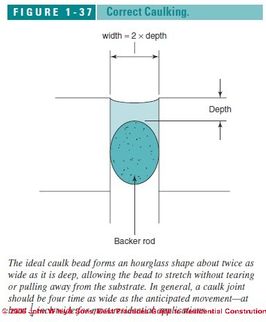
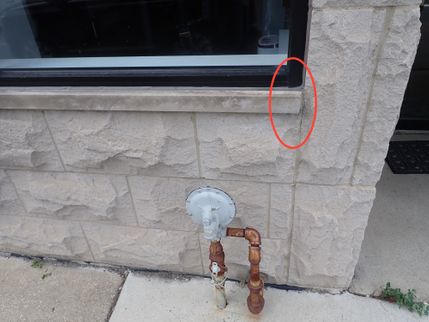
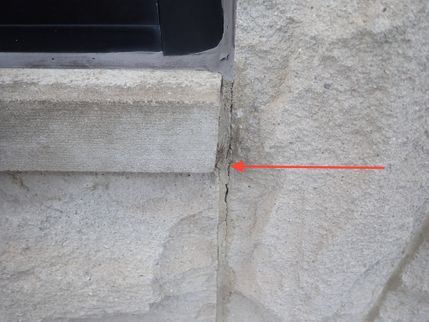
p20(1).jpg)
